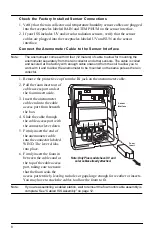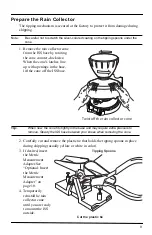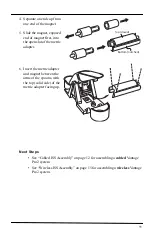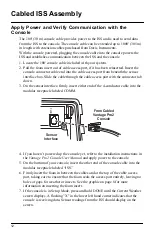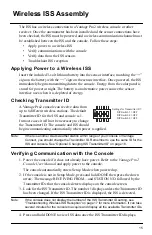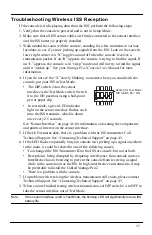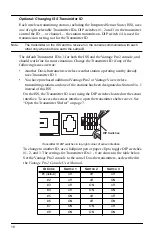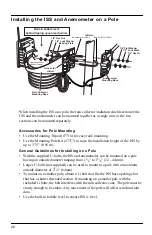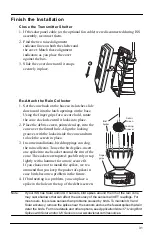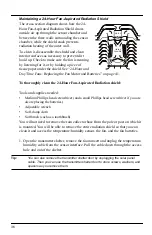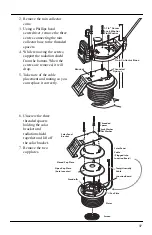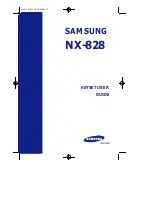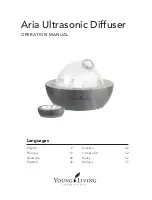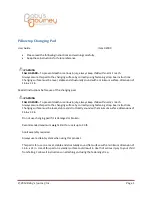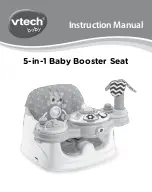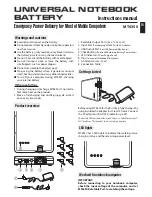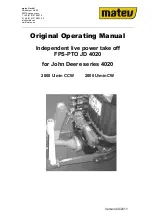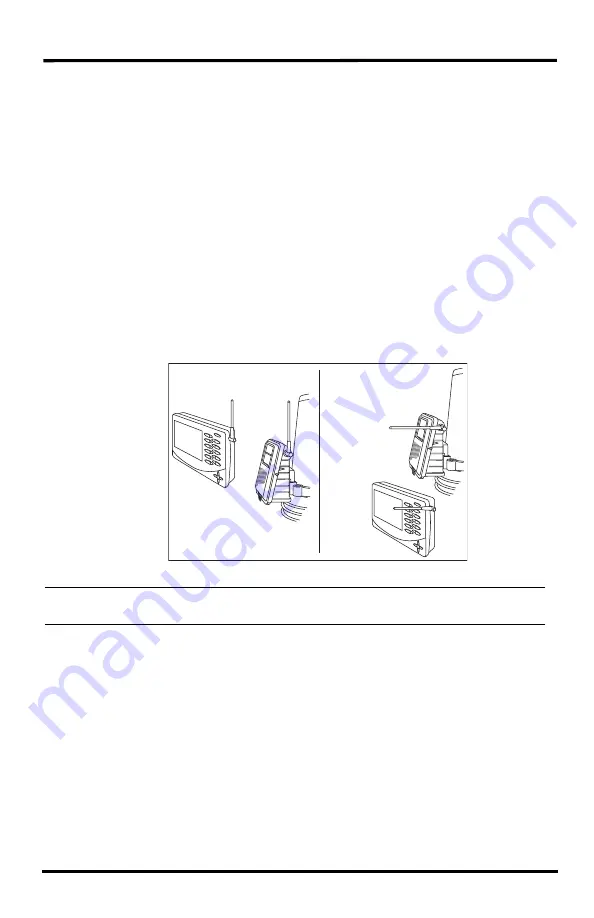
22
Optional: Wireless Transmission Considerations
The range of the radio transmission depends on several factors. Try to position the
transmitter and the receiver as close as possible for best results.
Typical maximum ranges include:
• Line of sight: 1000' (300 m).
• Under most conditions: 200 - 400' (60 - 120 m).
Other range and transmission considerations include:
• Range may be reduced by walls, ceilings, trees, foliage, a metal roof or other
large metal structures or objects such as aluminum siding, metal ducts, and metal
appliances, such as refrigerators, televisions, heaters, or air conditioners.
• Transmission between wireless units may be obscured by something
unidentifiable, or by some obstacle that can’t be worked around.
• For best results, orient the ISS antenna and the console antenna so that the
orientation and angles of the antennas are parallel to each other.
CAUTION:
The ISS and console antennas do not rotate in a complete circle.
Avoid forcing the
antennas when rotating them.
• Consider using a Wireless Repeater (#7627) or Long-Range Wireless Repeater
(#7654) to strengthen the signal or to increase the distance between the ISS and
the console.
(
(
(
For best reception, orient antennas
so they are parallel to each other.
(
(
(
If your ISS is directly overhead,
the orientation illustrated
here might work best.
Summary of Contents for 6322C
Page 47: ......

